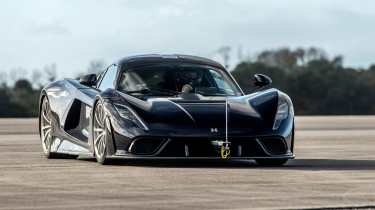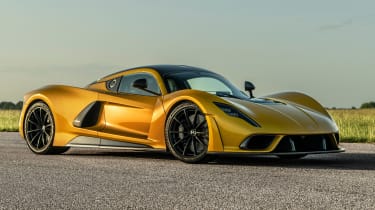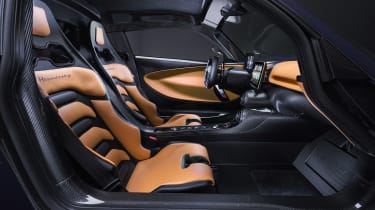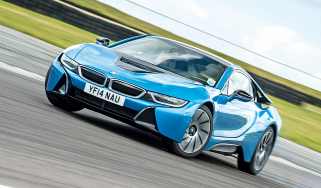The Hennessey Venom F5 is gunning for 300mph
Hennessey's Venom F5 hypercar will be rolled out for a top speed record attempt this year – should Bugatti be worried?
Hennessey doesn't do things by halves. Having recently unveiled a series of monstrously powerful Dodge muscle cars to celebrate the Hemi engine, the Texan firm now has its sights set on joining the 300mph club with its Venom F5 hypercar.
Ten years after it achieved 270mph with the Venom GT, Hennessey has enlisted American endurance racer David Donohue to carry out a top speed run in the Venom F5 this year, which could see it crowned as the world's fastest production car.
The record attempt has been a long time coming. The Venom F5 was first teased way back in 2014, and all 24 build slots were spoken for in 2021. With an expanding technical team that includes former Mercedes-AMG One chief engineer Brian Jones, Hennessey finally has the pieces in place to test the F5's full capability.
Theoretically, the 1817bhp hypercar can achieve 328mph, but the firm is setting a more realistic target of breaking 300mph in two directions (top speed record attempts must be carried out in two directions to nullify the impact of wind speed, road topography and other environmental factors). At present, Hennessey is searching for a suitable road or runway to carry out the record attempt – the Venom F5 previously achieved 271.6mph at Johnny Bohmer Proving Grounds in Florida, but this was a final validation test rather than a top speed run.
With a 6.6-litre twin-turbocharged LS-series V8, the F5 generates an astonishing 1817bhp and 1193lb ft of torque when running on E85 fuel. These peak figures arrive at 8000rpm and 5500rpm respectively, with the redline coming in at 8500rpm. A claimed 1360kg dry weight gives the €2.1m hypercar a power-to-weight ratio of 1317bhp/ton.
Helping it achieve such high outputs is a unique intake manifold design that positions the intercooler between the intake plenum and cylinder heads. This is paired with the bespoke turbochargers with 3D-printed titanium compressor housings and 76mm compressor wheels. A dry sump, increased cylinder wall and deck thickness plus various other reinforced components help it achieve more than twice the power of a Ferrari 296 GTB.
Transferring all that potential to the road is no easy task, so a Motec engine management system with five engine modes helps manage power depending on the conditions. Drive is sent to the rear wheels through a longitudinally-mounted seven-speed single-clutch automated gearbox; 0-62mph is said to come in under 3sec, with 0-124mph in under 5.
The F5’s structure is built around an 86kg carbonfibre tub manufactured by Silverstone-based Delta Motorsport, clothed in carbon body panels. A part-Inconel exhaust system, forged aluminum wheels and lightweight Penske dampers also contribute to the low kerb weight.
The braking package consists of 380mm Brembo carbon ceramic discs on all four corners, with six-pot front and four-pot rear AP Racing calipers. The wheels are 19-inch front and 20-inch rear items wrapped in Michelin Pilot Sport Cup 2 tyres, which have been tested to withstand the car's extreme speed potential.
As with its predecessor, the F5's styling is very much function over form. It’s clear that the design is aero-led, and while the 0.39Cd drag coefficient doesn’t sound particularly impressive, it could be a function of the downforce required to maintain stability at the high speeds the F5 is capable of.
The cabin is said to be inspired by a fighter jet, free of distractions and with maximum visibility. Of course, there’s an abundance of carbonfibre, but it’s offset by high quality leather for select elements. Perhaps the most notable feature inside is the steering wheel, which features a cut-down top section akin to an aircraft or racing car.











